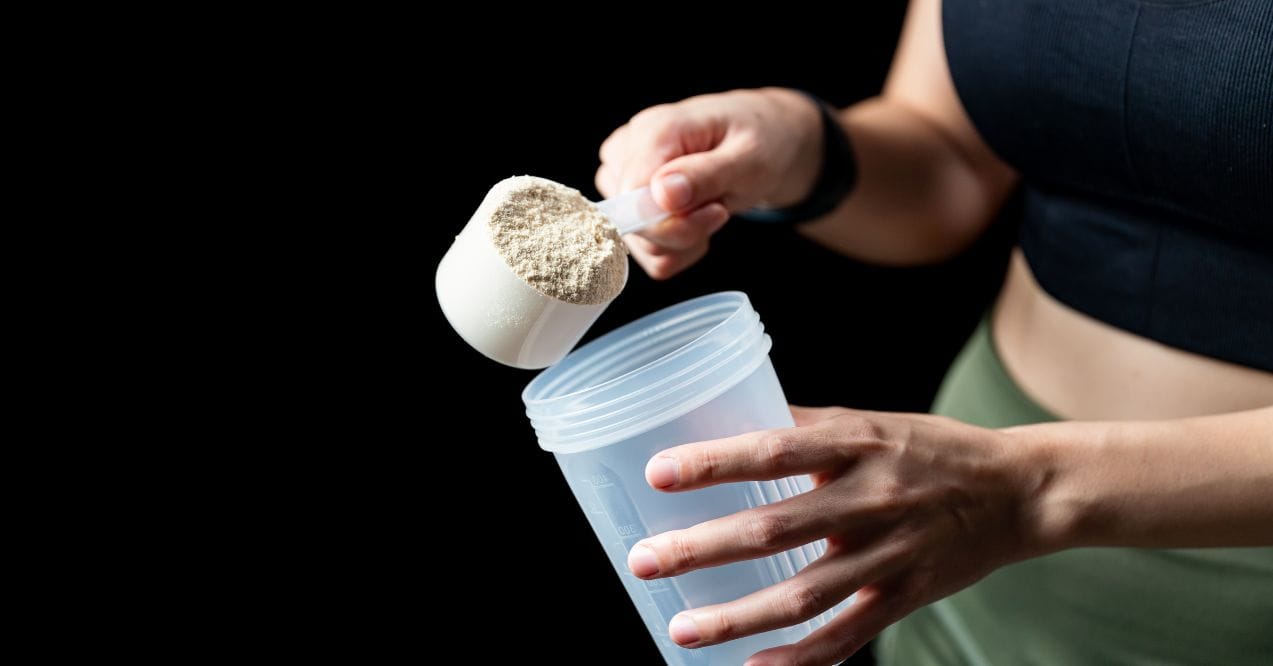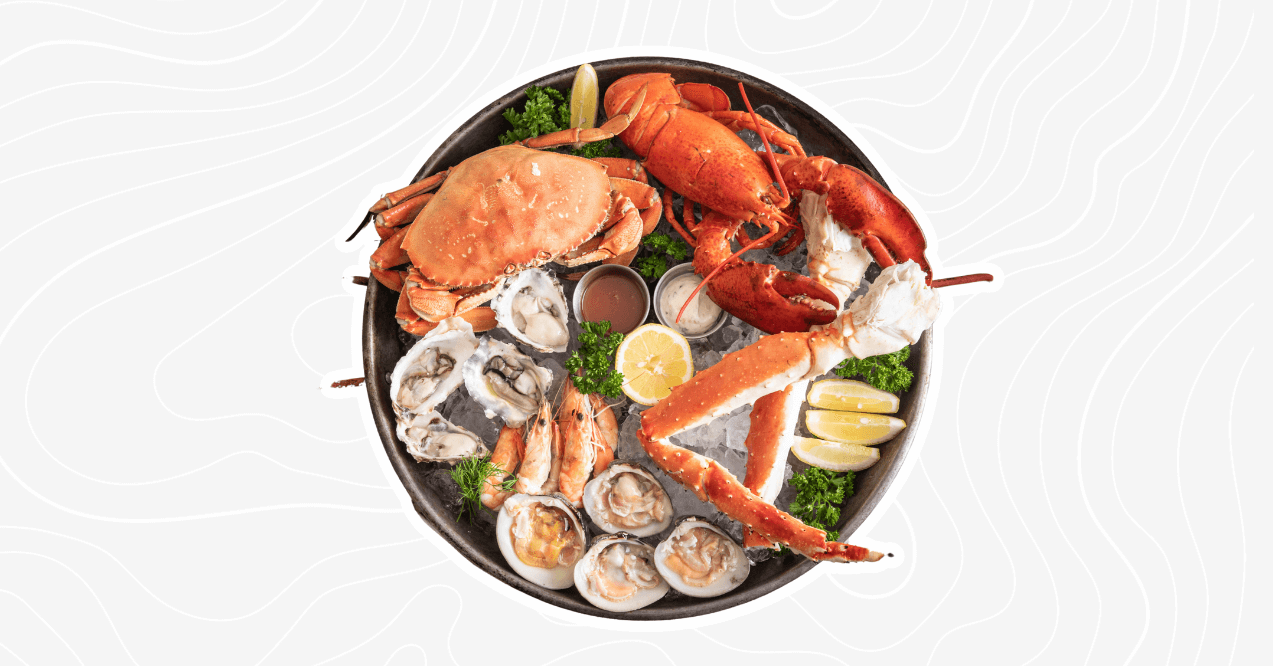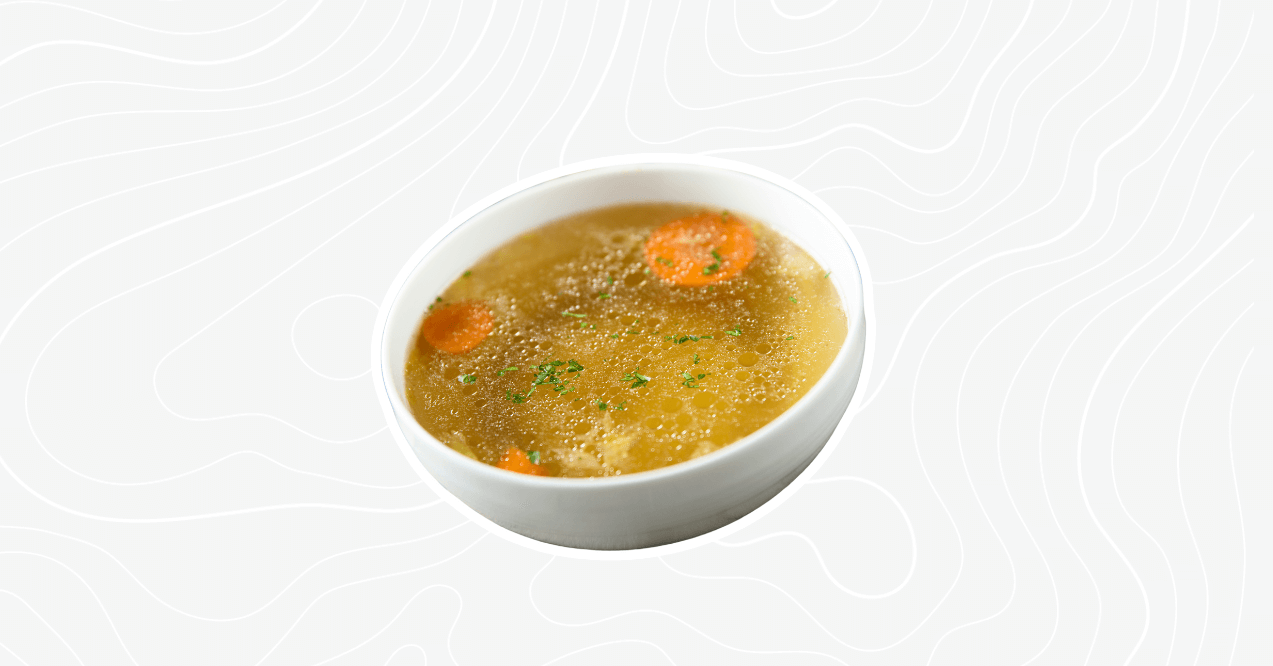How Is Protein Powder Made?
Ever wonder about those tubs of protein powder, bone broth supplements from muscle gain stacks at your local health store? How is protein powder made, transforming raw ingredients into the powder in your shaker?
Whether you’re a fitness enthusiast or just curious about nutrition, understanding the protein powder-making process can be eye-opening. It’s not just about what’s inside the supplement, but how it gets there.
In this article, we’ll explore the process of making protein powders, the different types available, and key factors to consider when choosing the best one for your fitness goals. Let’s dive into the world of protein powder!
Key findings:
What Is Protein Powder?
Protein powder is a dietary supplement designed to boost protein intake conveniently. It’s a concentrated source of this essential macronutrient, typically derived from various animal or plant sources.
These powders are processed to remove most of the fat and carbohydrates, leaving behind a product that’s rich in protein and easy to mix into shakes, smoothies, or even baked goods.
If you’re wondering how many protein g in one protein scoop, most protein powders contain 20-30 grams per serving, though this varies depending on the type and brand. Checking the label on your supplement ensures you’re getting the right amount to support your fitness goals. Additionally, drinking protein shake before bed can help sustain muscle recovery overnight by providing a steady release of protein while you sleep.

How is Protein Powder Made?
The process of learning how is protein powder made involves several steps, starting with the extraction of protein from its source. Here’s a general overview:
- Sourcing: The first step is gathering the raw materials. This could be milk for whey protein, eggs for egg white protein, or plant-based sources like peas or rice for vegan options.
- Extraction: Next, the protein is separated from other components using methods like filtration, enzymes, or heat treatment. This step ensures that the protein is isolated in its purest form.
- Concentration: The extracted protein is then concentrated to increase its purity, removing as much of the non-protein content as possible for a more potent product.
- Drying: The concentrated protein is dried, typically using spray drying, turning it into a fine powder that’s easy to mix and use.
- Flavoring and Mixing: At this stage, optional flavors, sweeteners, and other additives may be blended in to improve taste and texture, making the final product more enjoyable.
- Packaging: Finally, the powder is packaged and prepared for distribution, ready to hit the shelves.
Once you consume protein powder, your body digests and absorbs it at different rates, depending on the type of protein you choose. For example, whey protein is rapidly absorbed, making it ideal for post-workout recovery, while casein protein digests slowly, providing a steady stream of amino acids over time. But how long does protein stay in your system? Understanding protein metabolism and absorption rates can help you time your intake for optimal muscle growth and recovery.
Just be careful what you mix into it. Some ingredients, like excessive sugar or artificial additives, can take away from its benefits, so make sure to avoid products that shouldn’t be added to a protein shake.
What Kinds of Protein Powders Are There?
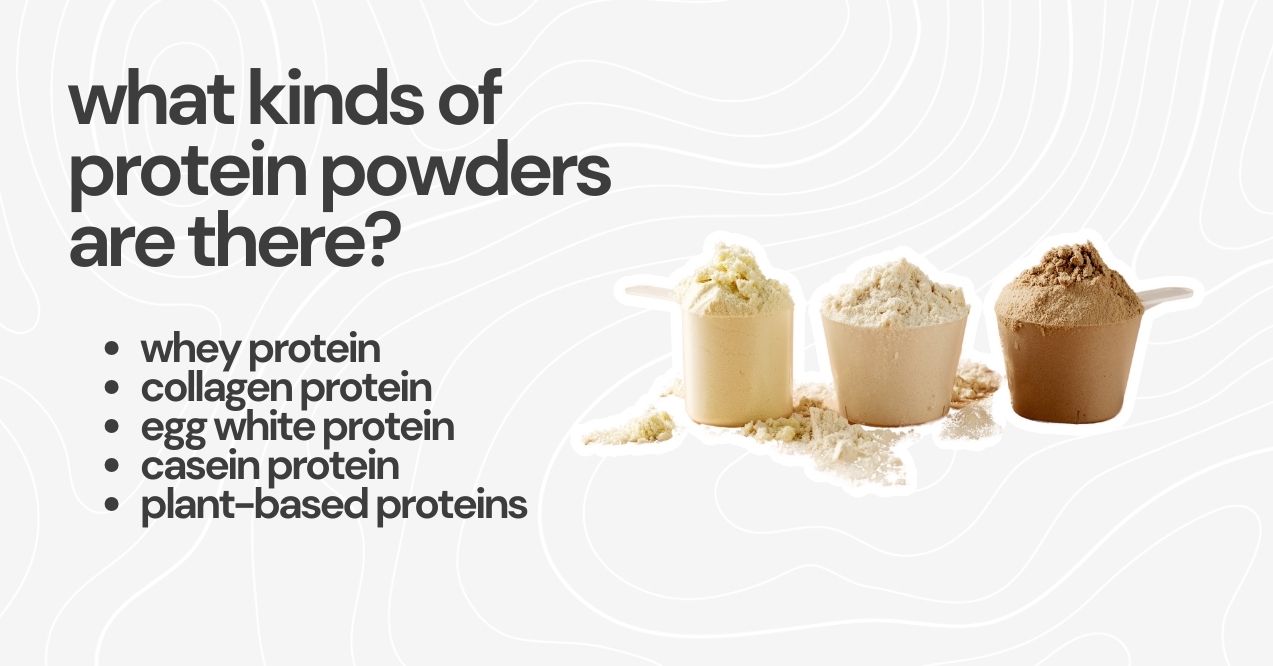
The world of protein powders is diverse, offering options to suit various dietary needs, preferences, and health goals. Let’s explore some of the most common types of how is protein powder made:
Whey Protein
Whey protein is a go-to for fitness enthusiasts and athletes. Derived from milk during cheese production, whey is a complete protein, containing all nine essential amino acids. It’s prized for its high bioavailability, meaning your body can easily absorb and use it for muscle repair and growth.
Collagen Protein
Collagen protein has grown in popularity for its potential benefits for skin, joints, and overall health. Sourced from animals, typically bovine or marine, collagen is rich in amino acids like glycine and proline. While bone broth is known for containing collagen, collagen protein powders offer a more concentrated, consistent source. Many people wonder about taking collagen and bone broth together, as both are known for their potential to support joint health. Those asking how much collagen is in bone broth, might be surprised to learn that dedicated collagen protein powders often offer a more concentrated and consistent source.
Egg White Protein
For those seeking a lactose-free animal protein, egg white protein is an excellent option. Made by separating egg whites from yolks, this protein powder is rich in essential amino acids, particularly leucine, which plays a key role in muscle growth and recovery.
Casein Protein
Casein digests slowly, providing a steady release of amino acids over time. It’s perfect for overnight recovery or as a meal replacement.
Plant-based Proteins
With the rise of plant-based diets, a variety of plant protein powders have become available:
- Pea Protein: A complete protein, rich in branched-chain amino acids.
- Rice Protein: Often paired with other plant proteins to complete the amino acid profile.
- Hemp Protein: Rich in omega-3s and fiber, offering more than just protein.
- Soy Protein: A complete protein providing all essential amino acids.
What to Look out for With Protein Powder Ingredients?
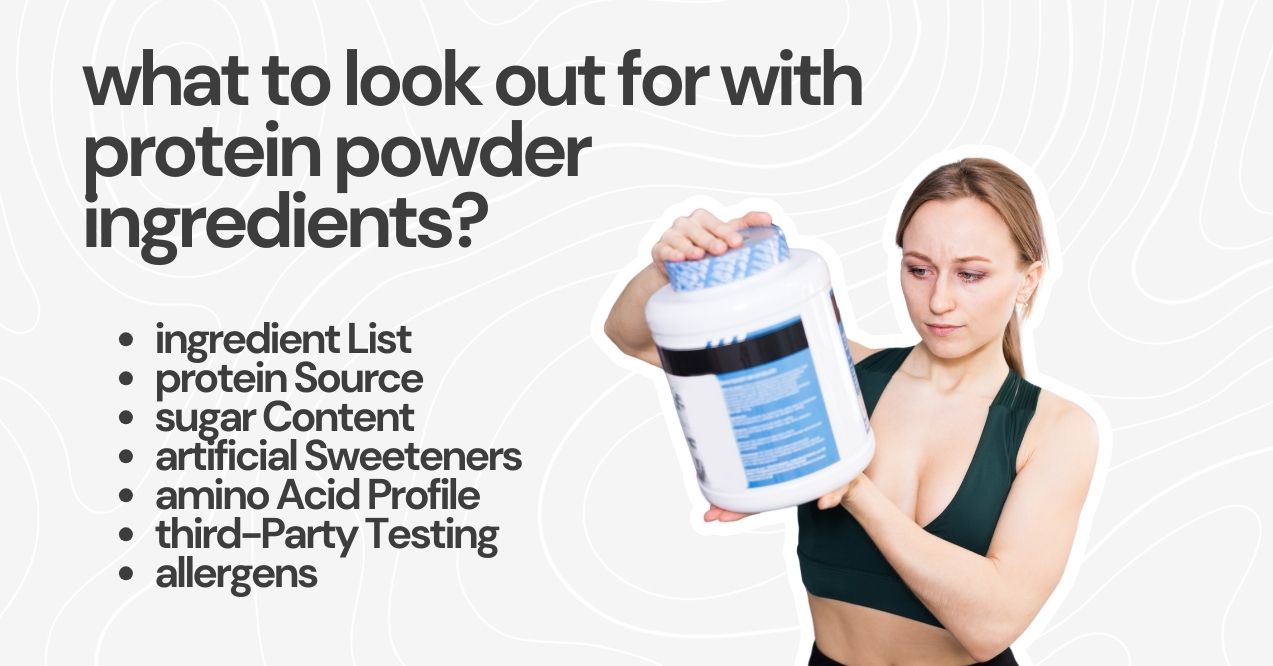
When choosing a protein powder, it’s essential to look beyond just the protein content. Here are some key factors to consider:
- Ingredient List – Look for powders with short, recognizable ingredient lists. The fewer additives, the better.
- Protein Source – Choose a protein source that aligns with your dietary needs and preferences.
- Sugar Content – Be wary of powders with high sugar content, often added for flavor.
- Artificial Sweeteners – If you prefer to avoid artificial sweeteners, check the label carefully.
- Amino Acid Profile – For muscle building, look for powders rich in branched-chain amino acids (BCAAs).
- Third-Party Testing – Certifications from third-party testing organizations can provide assurance of quality and purity.
- Allergens – Check for potential allergens if you have sensitivities or allergies.
Another important factor to consider is how much protein your body can actually absorb. Studies suggest that the body effectively processes around 20-25 grams of protein per meal for muscle protein synthesis. Any excess may still provide energy or contribute to other bodily functions, but spreading protein intake throughout the day is often the most efficient approach for muscle building and recovery.
When considering ingredients for protein powder, it’s worth noting that some brands, like Trumeta Bone Broth Protein, offer unique blends that combine the benefits of protein with other nutritional elements. This particular product, for instance, provides not only protein but also the potential benefits associated with bone broth, offering a multifaceted approach to supplementation.

Conclusion
In conclusion, protein powders are a convenient way to meet your dietary needs and support various health goals. By understanding the differences between types like whey, casein, plant-based, and collagen, you can choose the best protein powder for your lifestyle. Always prioritize quality and transparency when selecting a product to ensure it aligns with your health objectives. With so many options available, the right protein powder can play a key role in achieving your fitness and wellness goals.
no, protein powder is not typically made from worms. Most commercial protein powders are derived from sources like milk (whey, casein), plants (pea, rice, hemp), eggs, or beef. While some researchers are exploring insect-based proteins, including from mealworms, these are not common in mainstream protein powders.
protein shakes are made by mixing protein powder with liquid, usually water or milk. The powder is first added to the liquid in a shaker bottle or blender. It’s then shaken or blended until smooth. Additional ingredients like fruits, vegetables, or flavoring can be added for taste and extra nutrients.
when choosing protein powder, consider the protein source (whey, plant-based, etc.), ensuring it aligns with your dietary needs. Check for high protein content per serving, low sugar, and minimal additives. Look for third-party testing certifications, amino acid profile, and absence of artificial sweeteners. Consider your specific health goals and any allergies or sensitivities.
Advertisement. This site offers health, wellness, fitness and nutritional information and is designed for educational purposes only. You should not rely on this information as a substitute for, nor does it replace, professional medical advice, diagnosis, or treatment. If you have any concerns or questions about your health, you should always consult with a physician or other health-care professional. Do not disregard, avoid or delay obtaining medical or health related advice from your health-care professional because of something you may have read on this site. The use of any information provided on this site is solely at your own risk.
